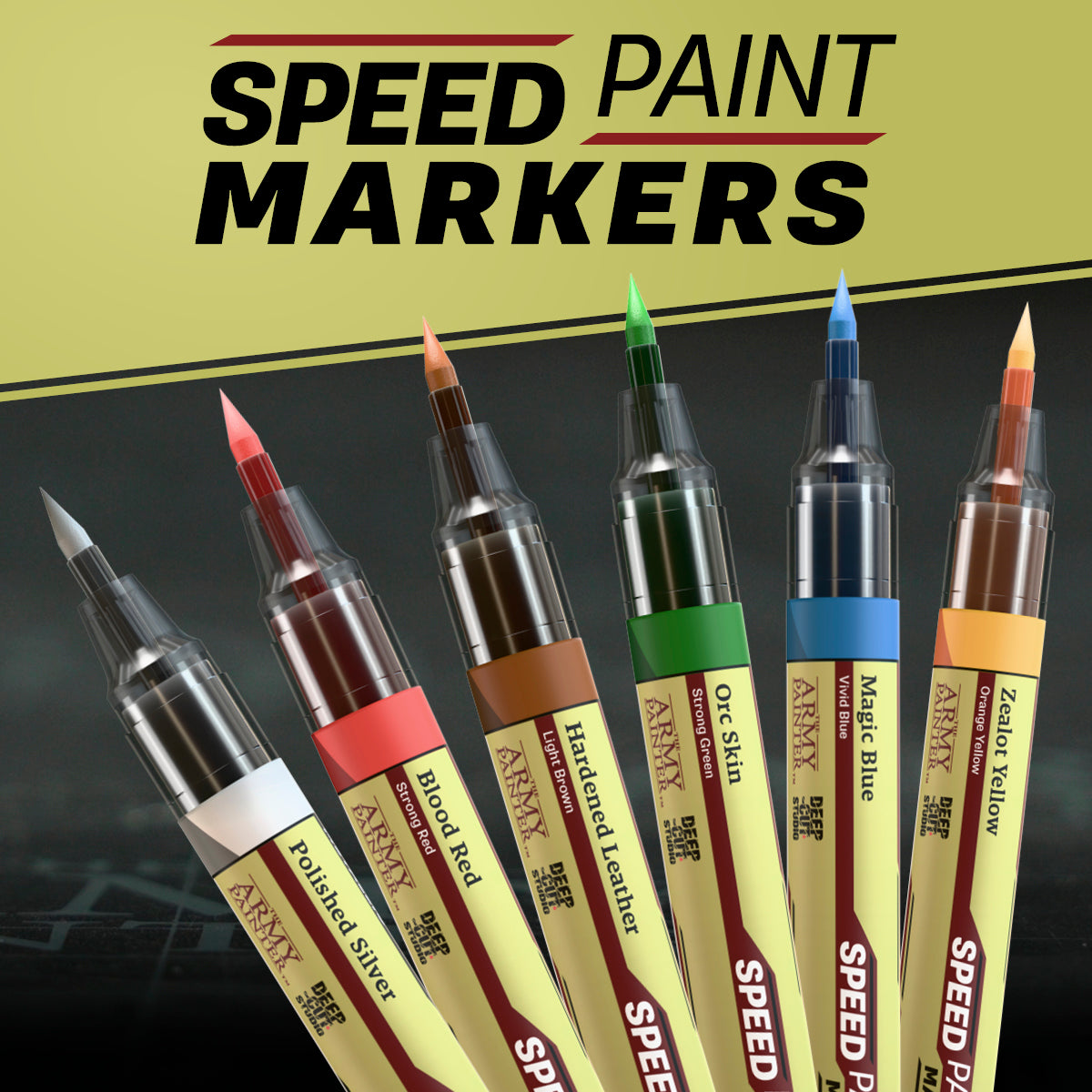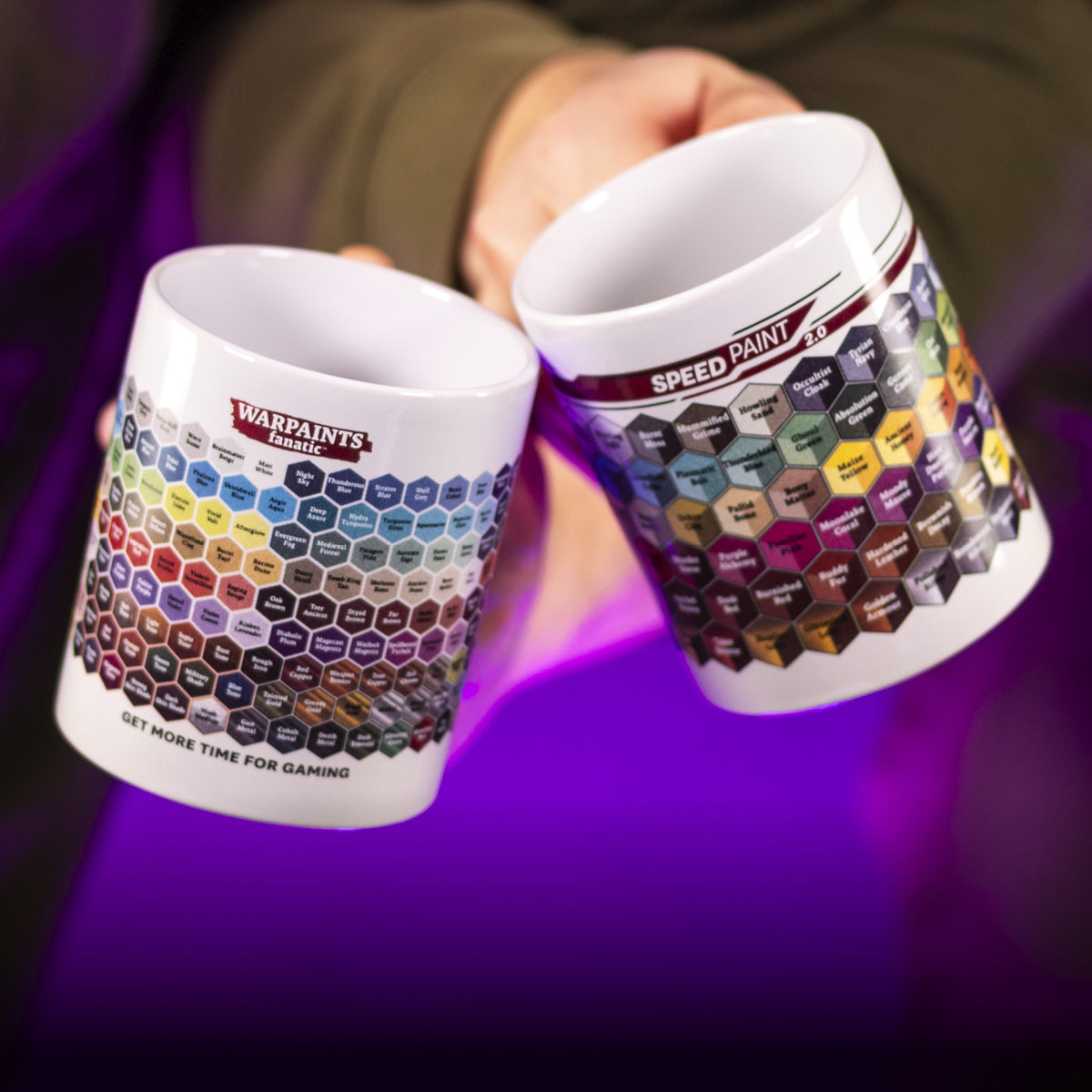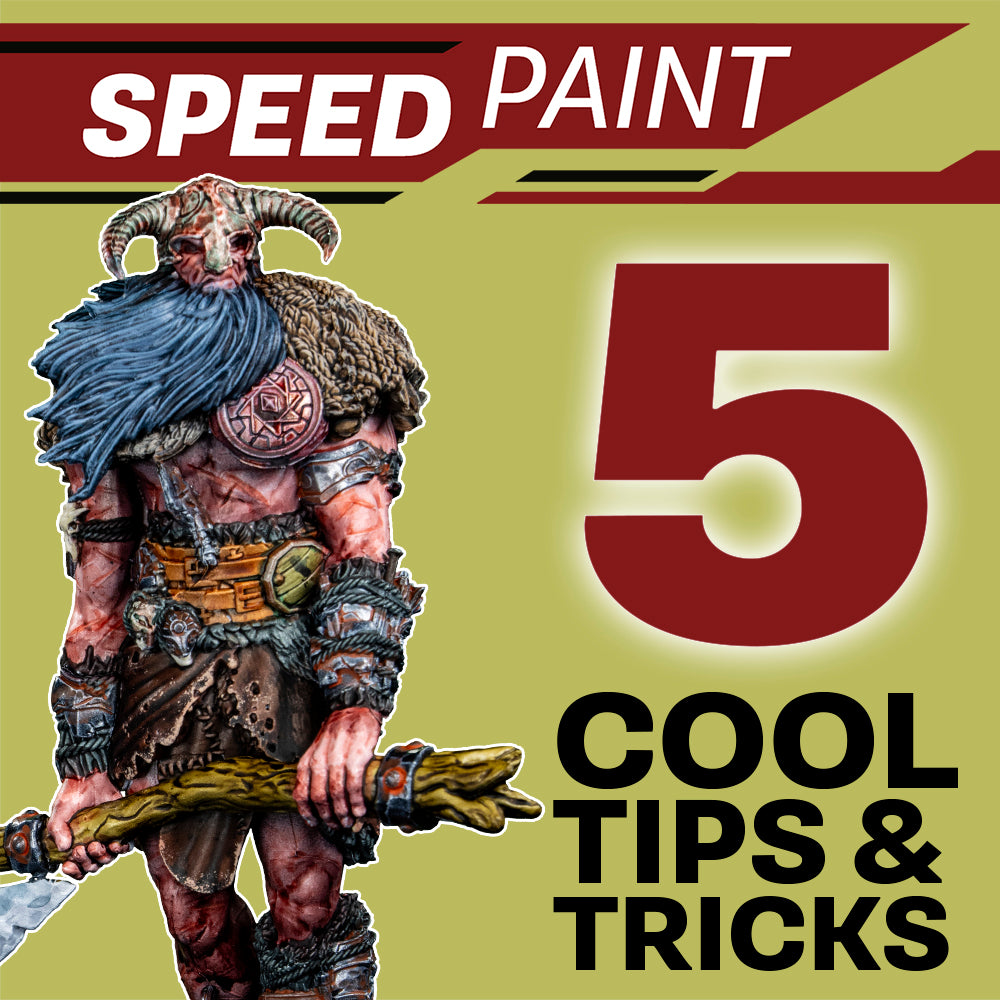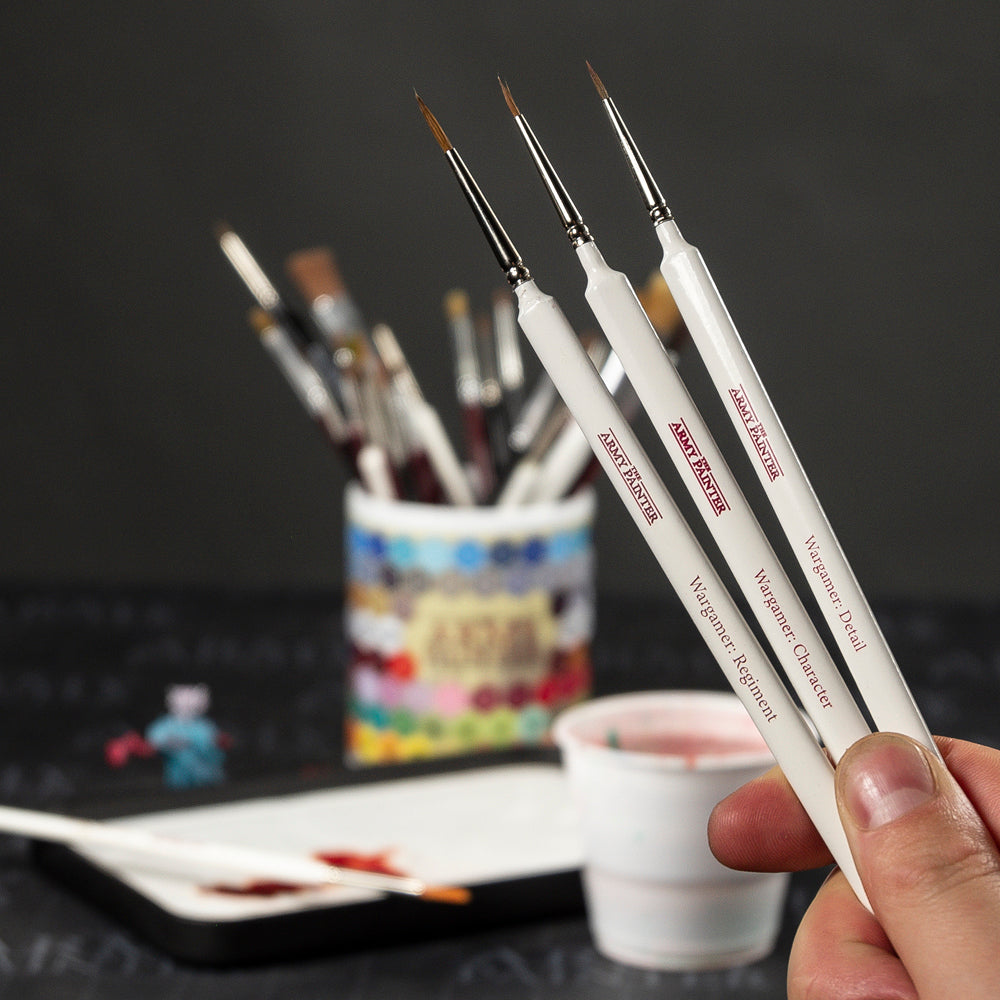Up your game with the Flexible Triad System
We first introduced the Triad System with our industry-leading airbrush-ready Warpaints Air. This method, beloved by hobbyists and professionals alike, offers a structured yet adaptable approach to selecting and applying colours, ensuring that your miniatures stand out with depth, contrast, and vibrancy.
With Warpaints Fanatic and the 216 paints in the range, we’ve expanded on the traditional understanding of a Triad System and developed the “Flexible Triad System”.
But what is a Flexible Triad System? And how can you use it? This article covers such questions and introduces the exciting benefits of the expanded “Flexible Triad System”.
What is a Flexible Triad System?
Before we take a closer look at how you can use the Flexible Triad System, we’ll start by diving into what the Flexible Triad System is and how it differs from the traditional Triad System.
Understanding the Flexible Triad System
Usually, when you think of a triad, you think of three colours. And that is also true for the “traditional” Triad System. Here, you’ll find three shades of the same colour: a base colour, a shade colour, and a highlight colour, all variants of the same hue.
Like the traditional Triad System, the Flexible Triad System is a method of selecting three complementary colours (a base, a shade, and a highlight) that work harmoniously together. However, the Warpaints Fanatic’s Flexible Triad System builds upon the traditional triad system by introducing more versatility and adaptability in colour selection by expanding the conventional three colours to six.
All the paints of the Warpaints Fanatic range (more than 200 colours) are divided into categories of six colours, called Flexible Triads. Inside this Flexible Triad, you’ll find six paints made from the same root colour that range in tone from dark to light with a consistent hue. This means that the six colours within the, i.e., Flexible Triad: Vibrant Greens or Flexible Triad: Cool Reds are ranged from very light to very dark.
Each flexible triad system is very precise. This means that the jump within the Flexible Triad: Vibrant Greens from 1 (Afterglow) to 2 (Vivid Volt) and 2 (Vivid Volt) to 3 (Electric Lime) is always the same gradient change.
Why use the Flexible Triad System?
Using the Flexible Triad System when painting miniatures offers several advantages:
First, using three shades of the same colour naturally creates a harmonious look and a natural transition between light and dark areas. This avoids the issue of clashing or overly contrasting colours, which can detract from the overall appearance of the miniature.
Second, the Flexible Triad system, with its base, shadow, and highlight colours, helps to create a sense of depth and three-dimensionality. Also, the shadows and highlights mimic natural lighting, giving the miniature a more lifelike quality.
Third, the Flexible Triad System is an easy way for beginners to start experimenting with colours and create colour schemes that automatically will look nice. It simplifies the complex concepts of highlighting and shading, making it easier for both beginners and experienced painters to achieve impressive results.
How do you use the Flexible Triad System?
Let’s look at how you actually use the Flexible Triad System. We’ll give you a step-by-step guide to how to do so when painting your miniature.
Step 1: Select your Flexible Triad System and colours.
To start with you will want to pick which of our Flexible Triads you’ll be using. There are 27 to pick from to suit any colour scheme, armour, clothing, weapons, skin tone, or other trinket your model may be bedecked with.
For our example, we’re going to pick the Flexible Triad: Deep Greens, perfect for anything from a savage orc warrior to a nimble woodland elf!
Step 2: Apply your basecoat
Our Flexible Triads are innovative in that they contain six colours instead of just three. This gives you several triads to pick from within the Flexible Triad family, but regardless of which you pick, you’ll always want to start with a darker colour.
In our example, we’re going to start with the darkest colour in the Flexible Triad: Deep Greens family, Angel Green. This will give us a nice, solid, dark colour in the shadows of the model as we begin to work up through the layers. Apply this in an even coat across all the areas you want to be this colour.
Step 3: Apply your midtone
After applying the basecoat, the next step is to apply your midtone. We’re shifting to a lighter tone within the Flexible Triad family.
Because of the flexibleness of the Flexible Triad System, you now have several choices on which colour you want to use. But in general, you’ll want to think of this step as the “main” colour you’ll see, so plan accordingly.
In our example, we’re going to pick Greenskin, the colour two steps up from our original basecoat of Angel Green. Paint this overtop all the areas we painted with our basecoat colour, only leaving the darker colour in the recesses and areas we want to appear as if in shadow. This is typically called a layer. By doing this we’re starting to give the model the appearance of definition and volume. Don’t worry, if you make any mistakes, you can go back with your basecoat colour and fix any shadows that need it.
Step 4: Apply your highlight
Lastly, you will want to pick your final highlight colour. This will be the lightest colour and is often used the most sparingly as well.
In our example we’re going to pick Wild Green, as it’s two steps above our midtone of Greenskin. This will be painted on the most prominent areas of the model to pick them out and mimic the look of light catching edges and raised surfaces. You’ll want to keep this to a smaller surface area than the midtone colour, so you’ll get a nice transition of dark to light from the basecoat, to the midtone, to the highlight.
Step 5: Refine and adjust
The great thing about the Flexible Triads is that you have so many colours to pick from, even just within the one colour family.
Once you’re done, if you feel like your model could be a bit brighter, you can always go back in with another highlight with an even lighter colour. In our example, this would be Feroucious Green.
If you wanted an even smoother transition between your different layers, you could use more than three colours, even up to all six of the Flexible Triad to give you the absolute smoothest transition between the layers!
Example: Three versions of colours from the same Flexible Triad System
In the examples below, you’ll see three versions of using the same Flexible Triad System, that being the Flexible Triad: Teals:

The picture above is an example of using the three lightest (Talisman Teal, Aqua Alchemy, and Amulet Aqua) colours from the Flexible Triad: Teals.

The picture above is an example that shows how the lightest (Amulet Aqua), the middle tone (Pharaoh Guard), and the darkest (Scarab Green ) colours from the Flexible Triad: Teals family create maximum contrast on the miniature.

The picture above is an example of using the three darkest colours (Scarab Green, Temple Gate Teal, and Pharaoh Guard) from the Flexible Triad: Teals.
Remember: practice and experimentation are key!
Remember, the flexible triad system is not just about choosing three colours; it’s about understanding how light and shadow work on a miniature and using your paints to replicate that effect and create dynamic and visually appealing colour schemes on your miniatures.
As with any technique, it requires some practice and experimentation. So don’t be afraid to experiment with different triads and colour combinations or adjust the contrast to suit the style and mood you aim to achieve. The Flexible Triad System is a guideline, not a strict rule set in stone.
Whether you are painting for display, competition, or gaming, the Flexible Triad System is a valuable addition to your skill set, enabling you to create stunning miniatures that will captivate and impress you.







